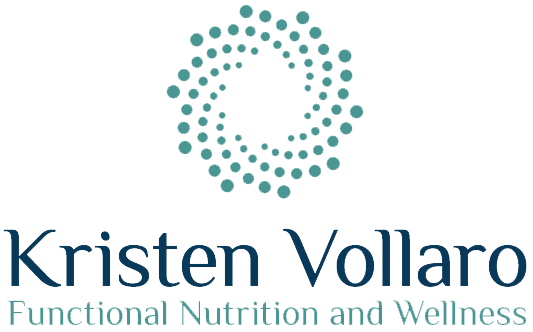Osteoarthritis - A Functional Medicine Approach to Systemic Inflammation
Osteoarthritis (OA) is one of the most prevalent diseases worldwide, affecting over 27 million people. It is often considered an inevitable part of aging, but it's not always a result of "wear and tear" on our joints. OA can be related to interruption in the normal physiological pathways that lead to progressive damage of the articular cartilage and bone remodeling process. There are a number of factors that can increase risk such as genetic predisposition, obesity, dietary influence and high bone density and mass.
Osteoarthritis is a progressive degenerative disease that can significantly impact individual's lives with symptoms including joint stiffness, pain, loss of mobility and muscle loss. OA can affect one or more of the joints in the body and most commonly affects hands, cervical, thoracic and lumbar spine, hips and knees. In the human body, joints are formed where two bones come together in the joint capsule which is surrounded by the synovial membrane containing the articular cartilage and synovial fluid.
Traditional medical approaches favor controlling pain and swelling with NSAIDS, prescription medications, cortisone injections and often eventually joint replacement, but there are many other dietary and lifestyle interventions that can help when taking the functional medicine approach to OA.
How does our cartilage change in OA?
Articular cartilage is avascular (containing no blood vessels) impairing its ability to regenerate. Articular cartilage contains chondrocyte cells, which manufacture an extracellular matrix comprised of collagen, glycoproteins, proteoglycans, and hyaluronic acid and is affected by both osmotic and mechanical stress. The chondrocytes are responsible for creating the extra cellular matrix are metabolically active in the articular cartilage, and appear to act as sensors and change metabolic activity based on their cellular environment. Inflammatory markers such as IL-1 (beta) and Tumor Necrosis Factor-alpha increase Nitric Oxide and reactive oxygen species free radicals and cytokine activity, which signal the immune system. The resulting inflammation results in an increased chondrocyte catabolism inhibiting the growth of the extracellular matrix and cell apoptosis, leading to degradation of cartilage and osteophyte formation.
There are two pathways for OA, bio-mechanical stress and/or systemic inflammation cause the degradation of the chondrocytes which lead to progression of OA. Progression of OA results in progressive degradation of articular cartilage from outer layers through the subarticular cartilage, eventually leading to bone-on-bone articulation and boney overgrowth known as osteophyte formation. The result is pain in joints during movement (and eventually at rest), stiffness, “crackling” (crepitus), poor joint articulation, and swelling. With progression comes increased pain and impact on quality of life, where an individual may have chronic pain, stiffness and be unable to perform activities requiring mobility such as squatting, climbing stairs, standing or walking longer distances.
How can OA be treated
If we understand that OA can be caused by systemic inflammation, then it makes sense to address the root of the problem. The functional medicine approach to OA looks at each individuals' symptoms and incorporates a multi-faceted treatment plan that integrates an anti-inflammatory diet, supplements for joint support and exercise.
A whole foods Diet
An anti-inflammatory diet based on whole foods, such as the Mediterranean diet can be helpful in reducing systemic inflammation. Dietary changes such as reducing refined sugar, avoiding processed foods and incorporating more fruits and vegetables as well as adding spices such as curcumin and ginger can help reduce systemic inflammation.
In addition to already established supplements such as chondroitin, glucosamine and methylsulfonylmethane (MSM, there are a number of other supplements that can be added into an individual's diet to help reduce inflammation. Omega-3 fatty acids, specialized pro-resolving mediators, Bone Morphogenetic Proteins (BMP), and collagen are a few to consider.
Omega-three fatty acids
Omega-3 fatty acids (eicosapentaenoic acid and docosahexaenoic acid), which are precursors for anti-inflammatory prostaglandins have been shown to reduce systemic inflammation. Emerging research is showing that specialized pro-resolving mediators (SPMs) disrupt the production of proinflammatory mediators such as cytokines, chemokine and inflammatory eicosanoids, limit leukocytic infiltration. SMPs act as immune system support and down-regulate the inflammatory response. Supplementation with either omega-3 fatty acids and/or specialized proresolving mediators can help reducing inflammation and pain management.
Bone Morphogenetic Proteins
Bone morphogenetic proteins (BMP) work at the cellular level where they become either a chondrocyte (producing cartilage) or an osteocyte (forming bone). They have anti-inflammatory and immunoprotective properties and are shown to improve pain and joint degeneration in clinical studies.
Collagen
Daily consumption of type hydrolyzed type 1 collagen has been shown to have anti-inflammatory effects, improve the thickness of articular cartilage and is chondro-protective with its ability to support chondrocyte production and prevent death of chondrocyte cells.
Exercise
People with OA frequently avoid exercise due to pain and stiffness in joints, which eventually can lead to muscle atrophy and lack of mobility. Having an exercise program helps create and maintain lean muscle mass. A program that incorporates strength building, flexibility and aerobic exercise has been found to be the most beneficial for people with OA, versus a program that only contains one activity (ie. Walking). For people with more advanced OA and loss of functional mobility, an aquatic program can offer the benefit of decreasing weight on the joints.
The impact of osteoarthritis can be addressed with a multi-faceted approach. Understanding and treating it as an inflammatory condition means that it does not have to be accepted as part of aging with inevitable decline.
